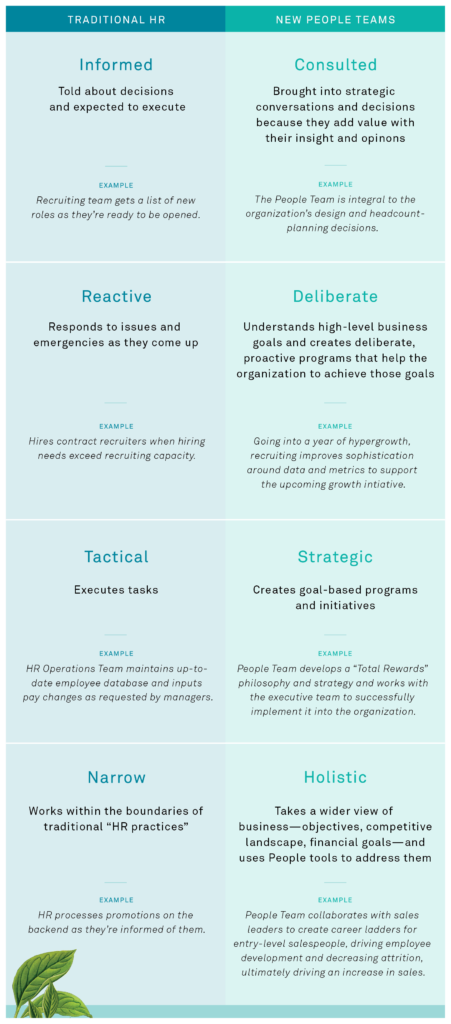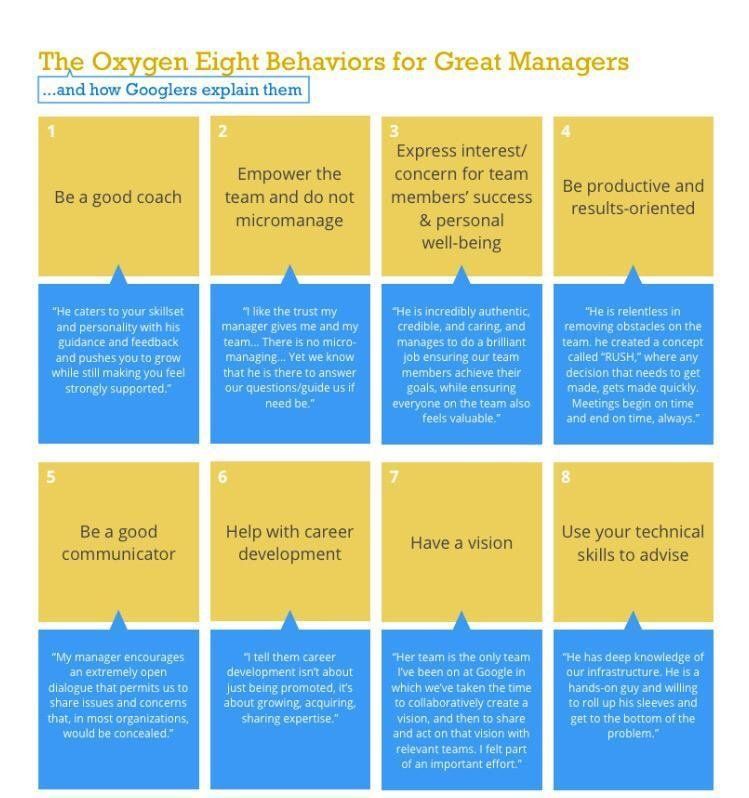Startups get a lot of advice. And for good reason – there are millions of decisions to be made as you begin the journey of building a company.
Some of the advice is clear-cut. More often, you’ll hear a chorus of voices with different experiences and points of view.
Perhaps nowhere is the advice more confusing than when it comes to if, when and how a company should add HR or People functions into a team. (For a little taste, read through this Quora thread.)
There are a lot of reasons why this is particularly contentious territory:
- Tech companies often prize a relaxed environment (think: hoodies and office kegs) that blurs the line between work and social.
- Admittedly, HR doesn’t have the best reputation. It’s often associated with liability or the times when things go wrong.
- Startups generally pride themselves on being fast-moving, driven by philosophies like “done is better than perfect” and “move fast and break things.” (At Buffer, we’ve written about our focus on a “startup mindset.”) No one wants to get too bogged down by heavy policies and procedures when they’re trying to reach product-market fit and scale your company.
As a result, tech startups with 100 or fewer employees have half as many HR professionals as same-size companies in other industries, according to data from PayScale.
But no matter what industry you’re in and at what stage of growth, all companies face some similar, important challenges that someone should be focusing on: Things like keeping your company on track, creating a diverse and engaged team, and cultivating a culture your team is proud to identify with.
In this post, we’ll gather up some advice on when and why to start a People Team, and I’ll share a bit about how and when Buffer formed our own People Team. But first, what’s the difference between HR and People?
How HR became People
HR’s tarnished reputation may explain why the discipline has increasingly been rebranded to “People” or “People Operations” in the tech world.
Google got the ball rolling on this trend by adopting the moniker of”People Operations” in 2006. Laszlo Bock, the SVP of People Operations at Google, writes in his book WORK RULES!:
“At Google, conventional business language wasn’t well-regarded. ‘HR’ would be viewed as administrative and bureaucratic. In contrast, ‘operations’ was viewed by engineers as a credible title, connoting some actual ability to get things done.”
As the change has progressed, it has proved more than just cosmetic. Instead, it’s been a catalyst to rethink the ultimate goal of the-area-formerly-known-as-HR: More data, less bureaucracy. More focus on the individual teammate, less time spent being a mouthpiece of management. More culture innovation, less legal tail-covering.
Google used data to solve real workplace challenges. What could other organizations do with a fresh perspective? If “old HR” is about managing, rules, and policies, People Operations is about designing work so that you want to be there – present, engaged, and proud of what you do.
Here’s how Greenhouse views the shift:

So which one do you want for your team? It depends on your goals:
- Traditional HR: Ensuring compliance and decreasing liability issues
- People Teams: Maximizing employee value through talent acquisition and management, employee experience and culture
At Buffer, we chose to start a People Team. Or rather, we sort of fell into a People Team. More on that in a bit.
When to start a People Team
Buffer’s very first People Team member was Deb, our former Culture Scout and current People Success Manager. Deb joined Buffer in October of 2015. Soon after, a former Happiness Hero transitioned into a de facto People Team Leader role.
The overall Buffer team was more than 40 people at that point, and Buffer had been around for 3+ years. Thinking back, the main reason we began to form a People Team seems to have been our rate of growth during that time. In November of 2015 alone, we added 10 new teammates!
Checking into the research and guidelines that exist on this topic, it looks like Buffer is right in the middle when it comes to the timing of forming a People Team.
Consider team size and/or growth rate
Project Include, an organization that provides resources for building meaningful, enduring diversity and inclusion into tech companies, recommends making HR one of your first 25 hires:
“Someone needs to build culture, set boundaries and expectations of behavior, communicate them clearly, and make sure people comply. HR should be responsible for both recruiting and retention, and reinforce the company’s commitment to D&I. It must set up fair processes for people ops and hiring, onboarding, promotions and compensation, and performance reviews. It should drive and provide operational transparency. This includes processes like building organization charts, training for both employees and managers, building the code of conduct, and determining and implementing benefits.”
A growth rate-focused guideline comes to us from Cornerstone:
“A huge factor in terms of deciding when you need to have somebody dedicated purely to HR is your rate of growth. If you’re at 10 people or 20 people or 50 people or 100 people, that actually doesn’t matter too much. What matters is the speed at which the team is growing — is it growing at one person a month, five people a month or 10 people a month?”
Jenny Buch, who has worked with close to a hundred startups around the globe, shares this guideline:
“There should be at least one HR Manager for 50 employees. Afterwards you might want to branch that out into HR specifications such as Talent Management and HR Development.”
Most important: Start before you need one
While there’s perhaps no hard-and-fast rule about when to start a People Team, the main thing is to make sure someone is thinking about work structure and culture from an early stage. (We were lucky at Buffer that our founder, Joel, thought a lot about these things from Day 1!)
“Some startups may start with two or three people for a year or two, and then all of a sudden, they have 50 or 60 folks working for them because people have invested in them, and they expect results,” Ian Carleton Schaefer, an employment and labor attorney and co-editor of the blog Technology Employment Law, told Motherboard. “They may not have been thinking from day one about, ‘How do we structure the workforce?'”
From Uber to Tinder to Github, the tech world has had the opportunity to learn from many examples of leaving HR as an afterthought or eschewing it entirely.
Schaefer told Motherboard that most of his startup clients only consider HR after lawsuit threats have already surfaced.
“Usually, the wakeup call comes by way of litigation, investigation, or when the people strategy is not completely sound and investors or potential acquirers look at the operating model and it impacts their evaluation. And that’s often way too late in the game to be focused on that.”
If you’re starting a People Team because:
- you’re forced to by conflict on your team
- you want to cover yourself legally, or
- your culture sucks,
then it might be too late – and your results might not be what you want them to be.
4 reasons to start a People Team
At Buffer, our People Team today includes the roles of People Engagement, People Success, Operations Manager, Director of People and Executive Wingperson/Director of Finance.
This group handles things like planning our annual retreats, guiding us through understanding our budget and bottom line, and growing and developing the team in a way that feels inclusive, engaging and creative. We’re very lucky at Buffer to have this level of focus on caring for and about our team and culture.
We didn’t start our People Team because we wanted to be compliant or prepared for HR problems (although those things are important, too!). We went in this direction because we think we have an amazing team, and we want to clear the path for them to do what they do best.
An important element of starting a People Team is understanding your own company’s motivation for adding this role into the mix.
Because you want to change the world
OK, startups deservedly get a lot of flack for thinking every new app will “change the world.” But people really are looking for more than just a place to work these days. In a report from the recent Great Place to Work For All conference in Chicago, Ellen McGirt shared an exhilarating news bulletin about what employees are looking for from employers today.
“It’s not just snacks and foosball. Across the board, employees want their organizations to be stabilizing forces in society, openly tackling social ills like race, poverty, and unequal opportunity. Everyone I talked to found this trend to be a thrilling and terrifying prospect that was going to re-shape business systems and thinking at every level.”
As workplace culture grows and expands to include even world culture at large, People Teams are poised to be the front lines of this change.
Because you care about building a diverse team
Focusing on diversity and inclusion is the path I took into the world of the People Team, and it remains a key priority for Buffer.
Though most startups like to keep things loose, diversity is one area where more rules and “bureaucracy” can actually be quite beneficial. Using data on young high-technology companies in California’s Silicon Valley, this study found evidence that “bureaucratization improves employment prospects for women in core scientific-technical roles.”
People Teams can provide the explicit structure needed to bust bias and open the door to underrepresented groups. Without this structure, it’s tempting to fall back on hiring people like you, and place too much emphasis on the nebulous concept of “culture fit.”
“When you have organizational structures and policies that are not very well defined, those are incredible opportunities for that bias to come through. When you’re in early stages of organization and there isn’t any clear process of promotion or any clear standards, often the promotions are based on who likes who,” Elizabeth Ames, senior vice president of marketing at the Anita Borg Institute, told Motherboard.
Because you want to succeed
An eight-year long study conducted during the first dot-com boom found that companies that tended to bring in HR expertise first were the fastest to go public and the least likely to fail.
Because you want your teammates to grow and succeed
Perhaps the most obvious reason to start a People Team might be this: You want your people, and therefore your company, to succeed.
From Google’s data-driven People Ops blueprint came Project Oxygen, an attempt to figure out exactly what makes a great manager. From the guiding question of “What if every Googler had an awesome manager?” Project Oxygen identified 8 common behaviors among the best managers – and those behaviors now guide management development programs.

The team has been able to show an overall improvement in management at Google by helping managers get better at coaching, empowering teams, managing team energy, staying results-oriented, communicating, developing teams, and sharing a vision.
I can’t imagine a much better outcome for the company!
Over to you!
We’re still pretty new at this People Team thing at Buffer, and I’d love to hear your thoughts on any and all of this.
- What’s your take on “HR” versus “People”?
- When did your organization implement an HR or People team, and was the timing right?
- How can People Teams be a force for good in their organizations?
Let me know what you think in the comments!
Try Buffer for free
190,000+ creators, small businesses, and marketers use Buffer to grow their audiences every month.




